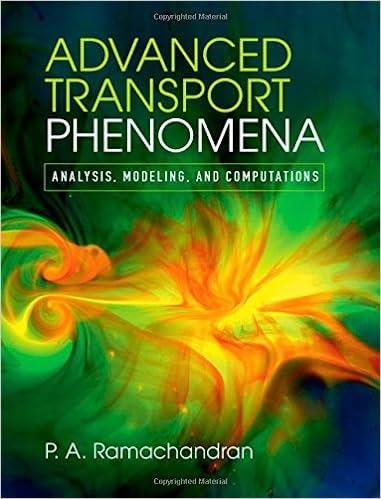A porous catalyst is used for (mathrm{CO}) oxidation, and the process is modeled as a first-order reaction
Question:
A porous catalyst is used for \(\mathrm{CO}\) oxidation, and the process is modeled as a first-order reaction with a rate constant of \(2 \times 10^{4} \mathrm{~s}^{-1}\). The effective diffusion coefficient for pore diffusion was estimated as \(4 \times 10^{-6} \mathrm{~m}^{2} / \mathrm{s}\). The catalyst is exposed to a bulk gas at \(600 \mathrm{~K}\) and 1 bar pressure with a \(\mathrm{CO}\) mole fraction of \(2 \%\). The external mass transfer coefficient is assumed not to be rate limiting.
Find the rate of reaction for a spherical pellet of diameter \(3 \mathrm{~mm}\). Express the rate as moles reacted per catalyst volume per second.
Find the effectiveness factor.
Find the effectiveness factor if the catalyst diameter were changed to \(1 \mathrm{~mm}\).
Estimate the range of values of the external mass transfer coefficient for which this resistance can be neglected.
Step by Step Answer:

Advanced Transport Phenomena Analysis Modeling And Computations
ISBN: 9780521762618
1st Edition
Authors: P. A. Ramachandran





